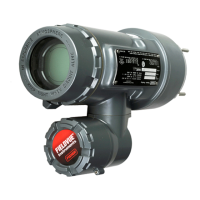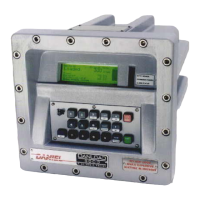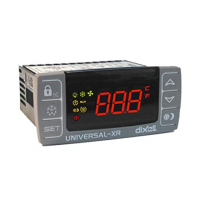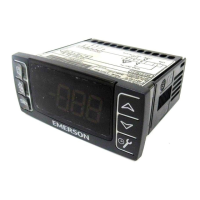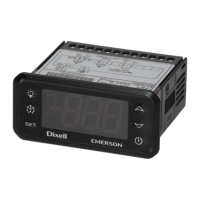DL8000 Preset Instruction Manual
B-6 Modbus Communications Revised February-2016
only on analog I/O specified by the I/O: AI raw A/D input (Type 3,
Parameter 17) and AO raw D/A output (Type 4, Parameter 17).
In host systems that do not accept floating point numbers, you can
specific up to eight sets of floating point ranges. This enables the host
to read and set floating point values (such as PID setpoints) as integer
values.
Note: The system converts the floating point values according to a
register or range of values you set in the Conversion field of the
Modbus Registers screen (Configure > MODBUS > Registers).
See Figure B-4.
The system uses the following equations to convert floating point
values to integers:
Float Range = High Value Float Scale – Low Value Float Scale
Integer Range = High Value Integer Scale
– Low Value Integer Scale
Adjusted Reading = Float Reading
– Low Value Float Scale
Integer = Integer Range x Adjusted Reading + Low Value Integer
Scale Float Range
The system uses the following equations to convert integers to floating
point values:
Float Range = High Value Float Scale – Low Value Float Scale
Integer Range = High Value Integer Scale
– Low Value Integer Scale
Adjusted Integer = Integer Sent
– Low Value Integer Scale
Float Value = Adjusted Integer x Float Range + Low Value Float
Scale Integer Range
Complete the following steps to configure the Scale Value tab for the
Modbus Configuration screen.
1. Review the values in the following fields:
Integer Scale,
Low Value
Indicates the 0% value for scaling. Valid values are
–32768 to 32767.
Integer Scale,
High Value
Indicates the 100% value for scaling. Valid values are
–32768 to 32767.
Float Scale
1 through 8
Indicates up to eight sets (Low Value and High
Value) of floating point ranges the system uses when
the host is not able to process floating point numbers.
2. Click Apply to save any changes you have made to this screen.
3. Proceed to Section B.3 to configure Modbus history options.

